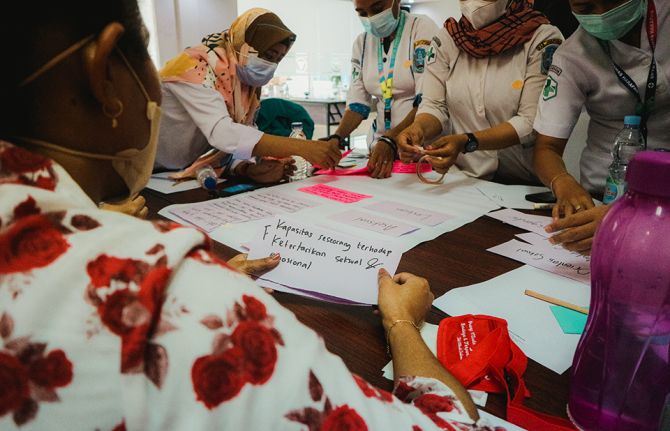
Feature Story
A sustainable HIV response: New global health sector strategy to help chart the way forward
23 May 2011
23 May 2011 23 May 2011
The World Health Assembly today adopted a new comprehensive Global Health Sector Strategy for HIV/AIDS 2011-2015, spearheaded by the World Health Organization (WHO). The strategy aims to provide a detailed and comprehensive guide to how health sectors can most effectively tackle the epidemic.
Recognizing that the nature of the epidemic has evolved in recent years, and that the AIDS response has to be dynamic and flexible, the World Health Assembly in 2010 called for a new HIV strategy to inform global health sector action. In consultation with some 100 member states, civil society and other key players, a number of whom participated online; a strategy has been formulated which takes into account great strides made in the AIDS response and maps out what needs to be done in the future.
The latest UNAIDS global report has shown that the AIDS epidemic has been halted and that the spread of HIV is beginning to be reversed. New infections have fallen by almost 20% in the last 10 years and between 2003 and 2009 there was a 13-fold increase in treatment coverage. However, in 2009 only a third of people in need of treatment received it and the demand for resources is still outstripping supply.
The new Global Health Sector Strategy for HIV/AIDS, which is fully aligned with, and complements, the UNAIDS strategy 2011-15, Getting to Zero, will operate within this changed landscape to optimize progress towards universal access and the attainment of the Millennium Development Goals. It promotes tailored responses to national and regional epidemics and analyzes the underlying socio-economic and cultural determinants contributing to the spread of the virus.
The strategy seeks to reduce vulnerability and structural barriers to accessing good quality services. It also demonstrates how HIV programmes can play a role in broader health outcomes and recognizes the importance of strong health and community systems to guarantee a sustainable response.
WHO will make five key contributions to the Global Health Sector Strategy:
- Scale up innovation in prevention
- Optimize treatment and care
- Support health for women and children
- Promote strategic health-sector information and planning
- Provide leadership in addressing health equity and HIV (examining inequities in access to HIV services)
The new strategy represents another significant step forward in the global response to HIV.



